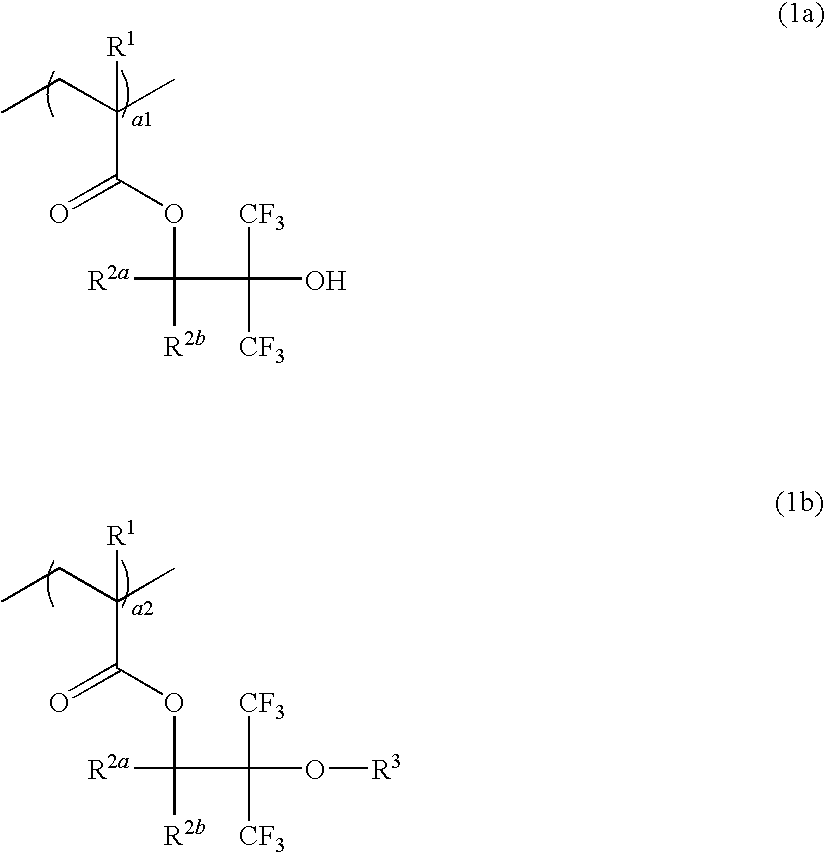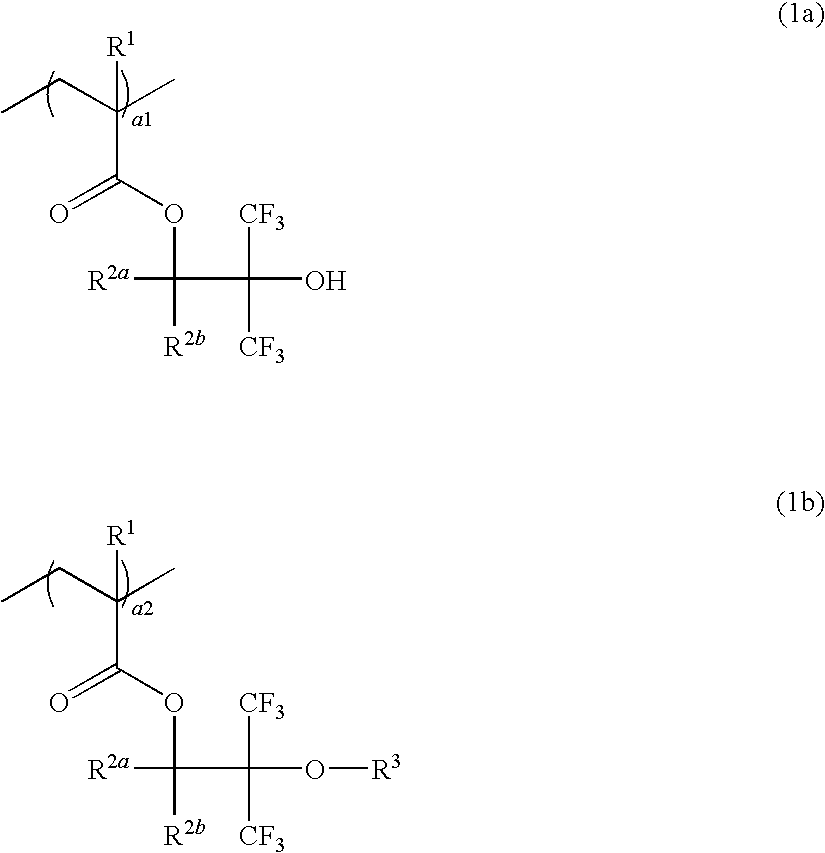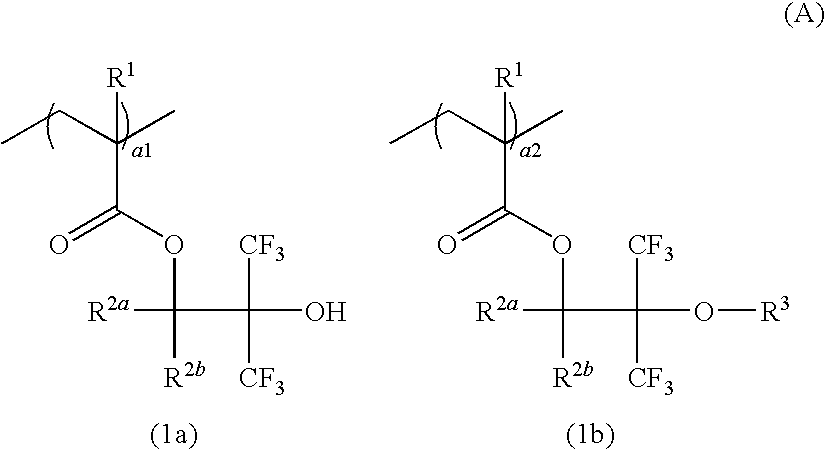Resist composition, resist protective coating composition, and patterning process
a technology of composition and protective coating, applied in the field of resist composition, resist protective coating composition, and patterning process, can solve the problems of resist performance, pattern profile change, postponement of fsub>2 /sub>lithography, etc., and achieve the effect of few development defects
- Summary
- Abstract
- Description
- Claims
- Application Information
AI Technical Summary
Benefits of technology
Problems solved by technology
Method used
Image
Examples
example
[0414]Examples of the invention are given below by way of illustration and not by way of limitation. The abbreviations used herein are GPC for gel permeation chromatography, NMR for nuclear magnetic resonance, Mw for weight average molecular weight, Mn for number average molecular weight, and Mw / Mn for molecular weight dispersity. Mw and Mn are determined by GPC versus polystyrene standards.
polymer synthesis example
[0415]Monomers 1 to 8 used in Polymer Synthesis Examples are identified below by their structural formula.
[0416]
Polymer Synthesis Example 1
[0417]Copolymerization of Monomers 1 and 2 (70 / 30)
[0418]To a flask in a nitrogen blanket, 64.35 g of Monomer 1, 35.65 g of Monomer 2, 3.60 g of dimethyl 2,2′-azobis-(isobutyrate), and 100.0 g of methyl ethyl ketone were fed to form a monomer solution, which was kept at a temperature of 20-25° C. To another flask in a nitrogen blanket, 50.0 g of methyl ethyl ketone was fed. With stirring, it was heated to 80° C., to which the monomer solution was added dropwise over 4 hours. After the completion of dropwise addition, the polymerization solution was continuously stirred for a 2 hours while keeping the temperature at 80° C. After the maturing, the solution was cooled to room temperature. The polymerization solution thus obtained was added dropwise to 1,500 g of hexane, after which the precipitated copolymer was filtered. The copolymer was dissolved ...
polymer synthesis example 1
Comparative Polymer Synthesis Example 1
[0421]Copolymerization of Monomers 1 and 8 (80 / 20)
[0422]To a flask in a nitrogen blanket, 79.68 g of Monomer 1, 20.32 g of Monomer 8, 3.90 g of dimethyl 2,2′-azobis-(isobutyrate), and 100.0 g of isopropyl alcohol were fed to form a monomer solution, which was kept at a temperature of 20-25° C. To another flask in a nitrogen blanket, 50.0 g of isopropyl alcohol was fed. With stirring, it was heated to 80° C., to which the monomer solution was added dropwise over 4 hours. After the completion of dropwise addition, the polymerization solution was continuously stirred for a 3 hours while keeping the temperature at 80° C. After the maturing, the solution was cooled to room temperature. The polymerization solution thus obtained was added dropwise to 2,000 g of water, after which the precipitated copolymer was filtered. The copolymer was washed four times with 600 g of a 9 / 1 solvent mixture of hexane and isopropyl ether, whereupon white solids were is...
PUM
 Login to View More
Login to View More Abstract
Description
Claims
Application Information
 Login to View More
Login to View More - R&D
- Intellectual Property
- Life Sciences
- Materials
- Tech Scout
- Unparalleled Data Quality
- Higher Quality Content
- 60% Fewer Hallucinations
Browse by: Latest US Patents, China's latest patents, Technical Efficacy Thesaurus, Application Domain, Technology Topic, Popular Technical Reports.
© 2025 PatSnap. All rights reserved.Legal|Privacy policy|Modern Slavery Act Transparency Statement|Sitemap|About US| Contact US: help@patsnap.com



